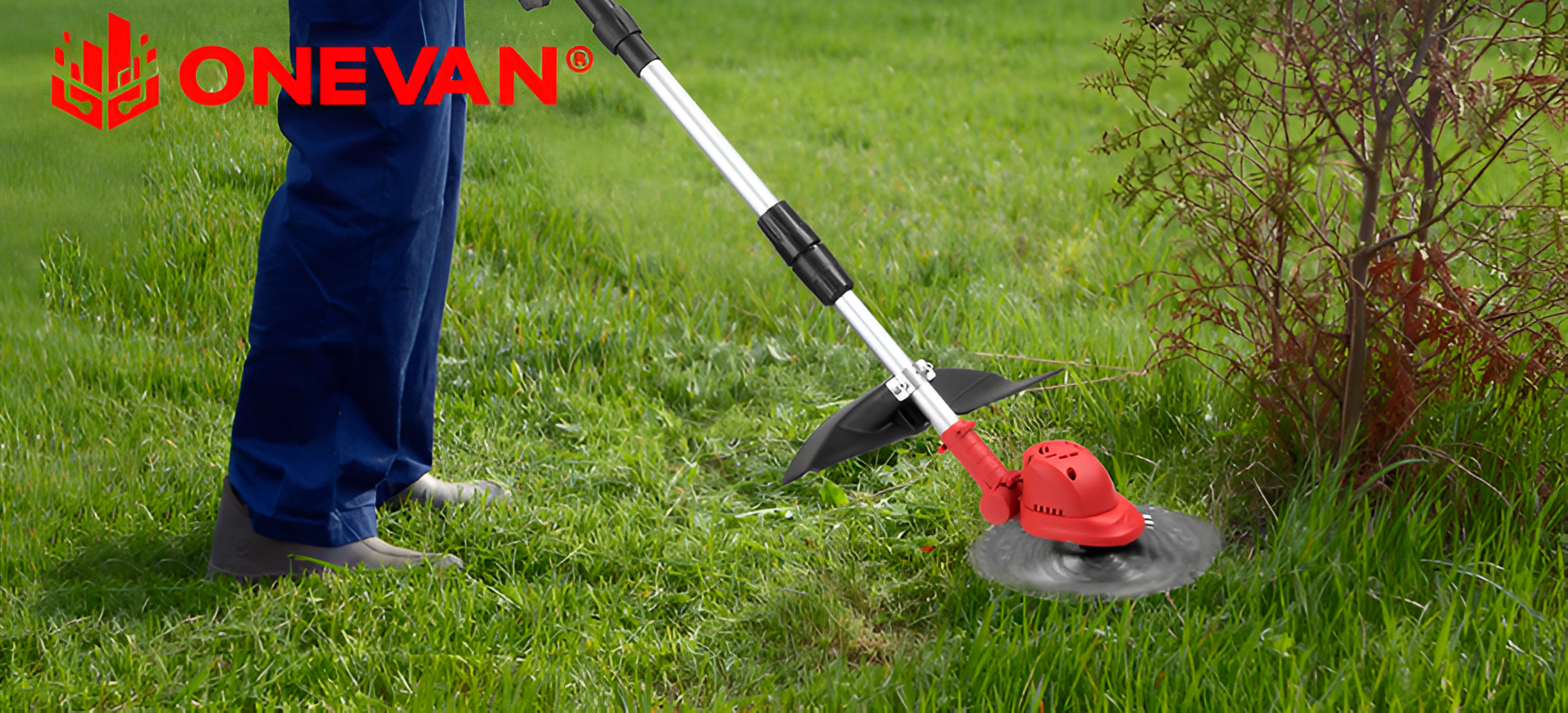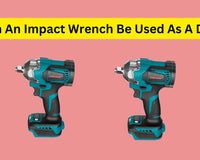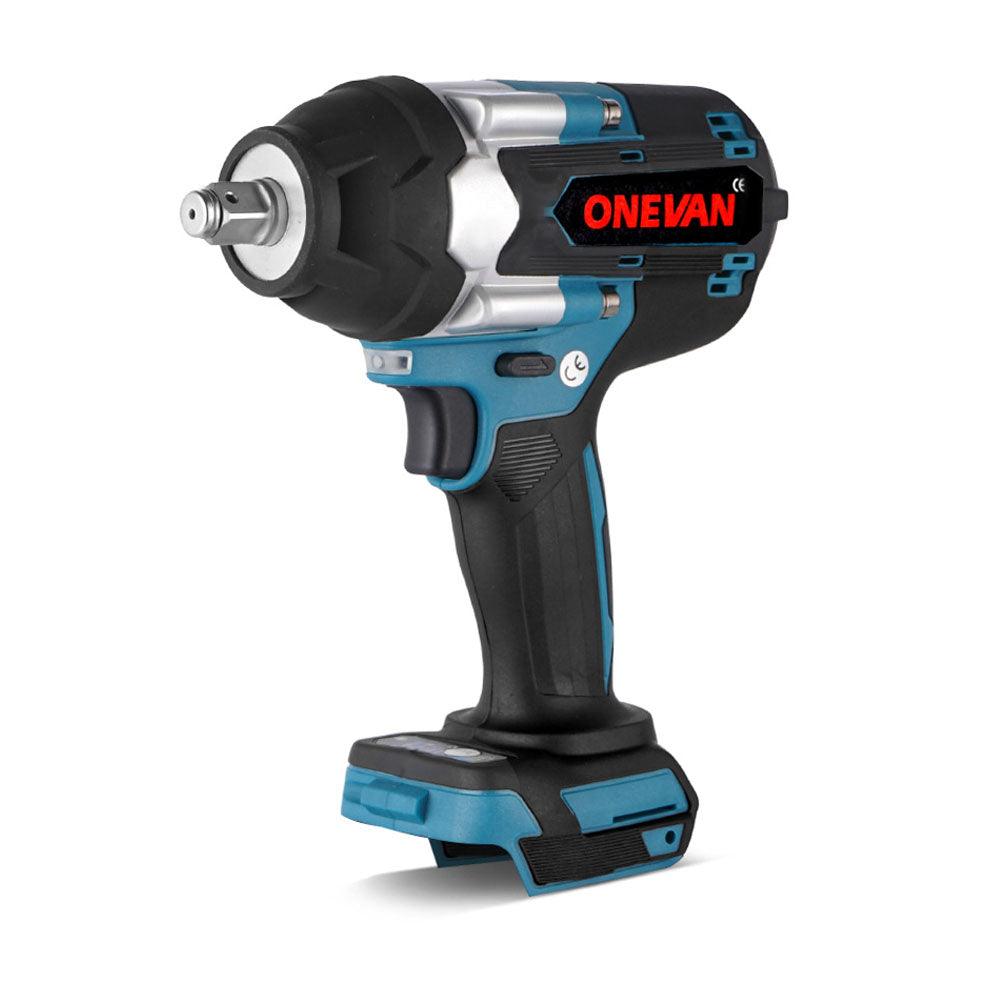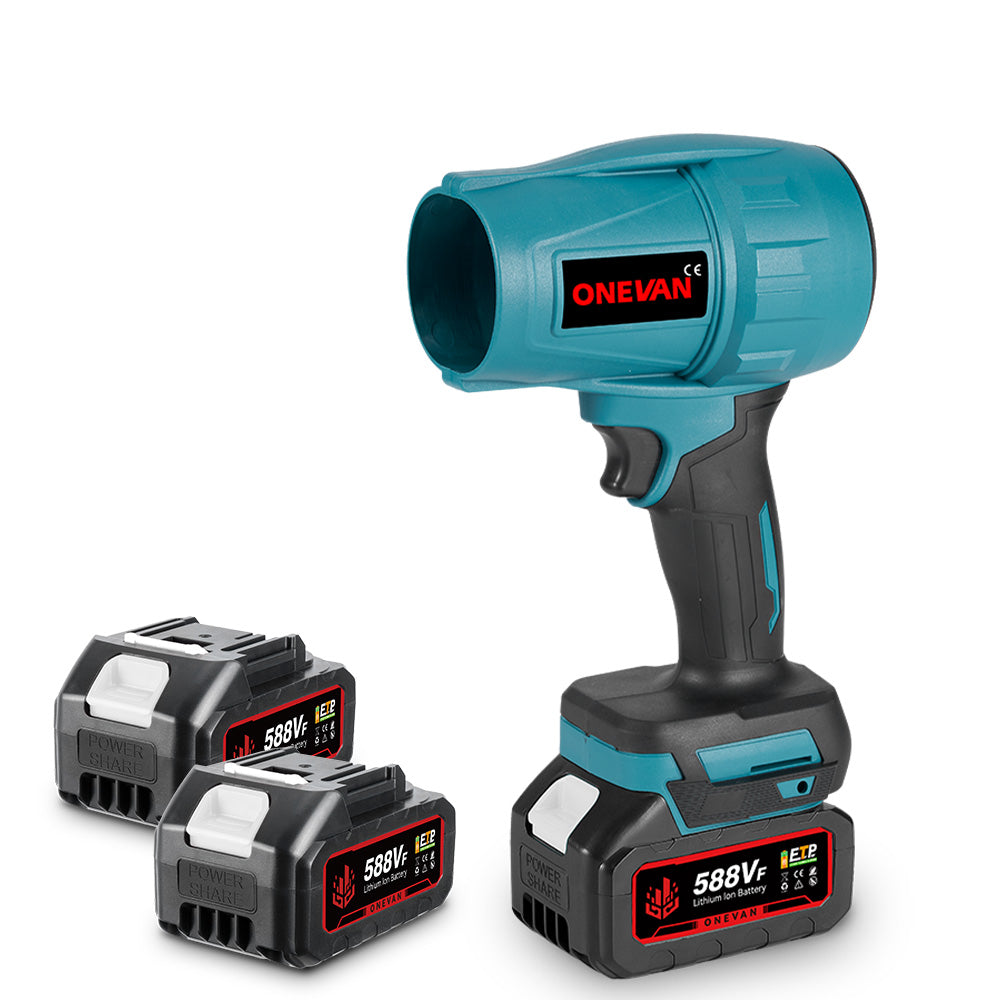When it comes to maintaining a beautiful lawn, choosing the right tools and timing is essential. Many gardening enthusiasts often face a common question: is it safe and effective to use a battery-powered lawn mower on wet grass? While the answer may be yes, there are numerous potential risks and challenges involved. Wet grass can not only affect the mower's performance but also lead to long-term damage to the lawn's health. This article will delve into the implications of mowing in wet conditions, explaining why this practice is generally discouraged, and providing practical tips to help you safely and effectively care for your lawn. Whether your goal is to extend the life of your equipment or keep your lawn thriving, understanding these key points is crucial.
1. Why is Wet Grass Difficult To Cut?
Clumping and Sticking
When cut, wet grass can easily form clumps and stick to various parts of the lawn mower, such as the blades and the bottom or underside of the mower deck. This occurs because water makes the grass more compact, and when cut, it clumps together instead of spreading evenly across the lawn. For example, after mowing wet grass, you may notice that clippings accumulate on the lawn as clumps if the grass is thick or if the mower becomes jammed. These clumps can interfere with the motion of the mower’s blade, and your yard will seem distinctly uneven after you have mowed your lawn. You will also spend some time cleaning the mower to get a fine cut.
Increased Resistance
Damp grass also exerts more pushback with the blades of a battery-powered lawn mower than dry grass because it is weightier and thicker. This added resistance means that the mower has to move and collect large loads of grass, which can be tiring; it drains the battery quickly and puts more stress on the mower’s motor. For example, if you have ever attempted to mow through a dense, wet area, you may have observed that the mower loses much of its responsiveness and the engine sounds under more stress than it typically would.
Reduced Blade Efficiency
One major area that a battery-powered lawnmower struggles with is when used on wet grass. This is because the blades are less efficient as they spin. Gentle contact slows down the blades more when wet, making it difficult to cut grass sharply. This can also lead to tearing the grass rather than cutting it neatly, resulting in an uneven and unhealthy appearance of the lawn. This indicates that achieving the same cutting quality as on dry grass becomes more strenuous, requiring greater power from the blades and motor.
Difficulty in Dispersing Clippings
A battery-operated lawn mower depends on its clippings to supply nutrients to the soil, such as the grass's natural fertilizer. Nevertheless, the cuttings from wet grass clump together, and when they are thrown on the grass, they do not spread easily on the lawn. This may result in patches or uneven grass growth in the lawn, compromising its overall health.
Uneven Cuts
Uneven cuts are common when using a battery-powered lawn mower on wet grass. The additional moisture can cause the grass to bend and clump, making it difficult for the mower blades to achieve a uniform cut.
2. The Dangers of Mowing a Wet Lawn
Risk of Slipping
Mowing a wet lawn may cause you to fall, which can be dangerous, or to drop the mower or handle it carelessly. Stability is essential in preventing accidents while operating your mower.
Electrical Hazards
One should avoid exposing the battery-powered lawn mower to excessive water, which possibly leading to electrical complications. H2O may get into the motor or battery compartment, leading to shorting or damaging the various elements. This presents a safety concern to the user and significantly reduces the mower's and battery's life expectancy.
Lawn Damage
Mowing wet grass, in particular, will damage the lawn. This means that the moisture, when added, adds to the weight and resistance that is applied to the mower, resulting in the formation of ruts or sinking into the ground, damaging the grass and the ground surface. It can also chew up or rip the grass, making the appearance of a lawn unhealthy and ugly.
Lawn Mower Blade Damage
It becomes sticky, and when the grass is wet, the blades stick, shortening their lifespan. Dull blades are ineffective at cutting grass; instead, they tear it, resulting in an unsightly lawn appearance.
Lawn Mower Engine Additional Strain
Mowing in wet conditions can also strain the mower's engine. The increased resistance and clumping of wet grass mean the motor has to work harder, which can lead to overheating and reduced performance overall. This additional strain shortens your lawn mower's lifespan and increases the risk of incurring costly repairs.
Lawn Mower Blades and the Problem of Rust and Corrosion
Frequently subjecting battery-powered mowers to rain or any form of moisture will lead to rust buildup on the blades. Rust not only hinders the effectiveness of the blades in cutting but also weakens them, making them more prone to breaking or dulling. Also, Corrosion can also impact other mower components, causing malfunctions that can be expensive to fix.
3. The Impact Of Cutting Wet Grass for Lawn Health
Increased Risk of Disease and Pests
Mowing wet grass can create the perfect environment for diseases, such as fungal infections, and pests, such as mosquitoes, to thrive. When you mow wet grass, the blades can spread moisture from one part of your lawn to another, creating an ideal breeding ground for fungus and other harmful microorganisms.
Clumps of wet grass left behind after mowing can block sunlight and trap moisture on your lawn, allowing disease-causing organisms to multiply. This can lead to dead spots or patches on your lawn, requiring expensive treatments or reseeding. Furthermore, the stress caused by cutting wet grass can weaken your lawn's overall health, making it more susceptible.
The Soil's Poor Aeration
Mowing wet grass also makes it harder for your lawn to get the necessary nutrients and oxygen from the soil. When the ground is saturated with water, it becomes compacted and prevents air and nutrients from reaching the roots of your grass. This can result in stunted growth, wilting, and discolouration of your lawn. Regular mowing on dry grass helps to keep the soil aerated and promotes healthier root development.
Weaker Grass Roots
Cutting wet grass can pull out or damage your lawn's roots, making it difficult for them to absorb water and nutrients effectively.
This weakens the overall health of your grass and can lead to thinning areas or bare spots in your lawn. To maintain a lush and healthy lawn, it's advisable to wait for drier conditions before mowing.
4. If You Must Cut Wet Grass, How to Use Battery Lawn Mowers (Battery Lawn Mowers Tips For Cutting Wet Grass)
Choose the Right Battery-powered Mower
When selecting a battery-powered mower for cutting wet grass, look for models with high-voltage batteries and robust motors to handle the increased demand. Opt for lawn mowers with sealed battery compartments to protect against moisture and prevent electrical hazards. Choose a mower with adjustable cutting heights to make navigating thicker, damp grass easier.
When searching for a battery-powered mower for wet grass, the ONEVAN 4000W Battery String Trimmer stands out. This versatile mower, also known as a weed wacker or weed eater, offers cordless convenience, making it rechargeable and free from cumbersome wires. Its powerful 4000W brushless motor, with a no-load speed of 36000 RPM, ensures smooth mowing, high-temperature resistance, and long life. Overall, the ONEVAN 4000W mower is designed for user-friendly operation, ensuring hassle-free lawn maintenance.
Wear Appropriate Gear
When mowing wet grass, it's crucial to wear appropriate gear for your safety.Invest in good rubber boots or waterproof shoes to prevent slips and falls while mowing on soggy ground. Wear gloves to protect your hands from moisture and potential electric shocks. Additionally, consider wearing rain gear or a rain jacket to keep yourself dry while operating the lawn mower.
Adjust Mowing Height
When mowing wet grass, it's essential to adjust the cutting height of your lawn mower accordingly. Set the lawn mover blades higher than usual to avoid scalping or damaging your lawn. This also helps reduce the chances of clogging and ensures a more even grass cut.
Mow in Dry Spots First
If your lawn has both wet and dry spots, always start mowing in the drier areas first. This will prevent any added moisture from spreading to the already damp parts of your lawn.
Avoid Overloading the Mower
It's tempting to try and cut large clumps of wet grass in one go, but this can overload your mower and decrease its performance. Instead, take smaller passes and empty the catcher frequently to maintain a consistent cutting level.
Monitor Battery Usage
When mowing wet grass, it's especially important to keep a close eye on your mower's battery usage. The increased resistance from the damp grass can drain the battery quicker than usual, reducing the overall runtime. To avoid running out of power midway through your task, start with a fully charged battery and consider investing in a spare battery to extend your mowing sessions.
Or you can also consider purchasing this ONEVAN 3000W Cordless Lawn Mower. The ONEVAN 3000W Cordless Lawn Mower is a powerhouse in lawn maintenance, featuring a high-performance brushless motor that delivers an impressive 4000W of power for efficient and reliable operation. Constructed with high-quality materials, this trimmer promises durability and longevity, making it an ideal choice for both residential and commercial use.
Avoid Sharp Turns
When cutting wet grass, avoid making sharp turns with your mower. This can cause the wheels to slip and damage the turf. Make gentle curves and take wider turns to maintain stability and prevent unnecessary damage.
Pay Attention to Obstacles
Wet grass can hide obstacles such as rocks, sticks, and other debris that could damage your mower or cause accidents. Be extra vigilant when mowing wet grass and clear any visible obstructions from your path before starting.
Maintain Mower’s Proper Traction
Avoid mowing wet grass on steep slopes or inclines to ensure your mower has adequate traction. The damp ground can make it difficult for the mower's wheels to grip and may cause it to slip or tip over.
5. How To Maintain The Battery Lawn Mowers After Cutting Wet Grass
Cleaning and Drying the Mower
- Disconnect the Battery: Always remove the battery before cleaning to avoid any accidental startup or electrical hazards.
- Remove Grass Clippings: Use a brush or gentle cloth to remove grass clippings and debris from the mower's deck and blades.
- Wipe Down Surfaces: Use a damp cloth to wipe down the exterior surfaces of the mower, ensuring all mud and dirt are removed.
- Inspect Wheels and Undercarriage: Check the wheels and undercarriage for any stuck grass or debris and clean them thoroughly.
- Drying the Mower: Allow the mower to air dry completely in a dry and ventilated area to prevent rust and corrosion.
- Check Electrical Components: Make sure all electrical connections and battery terminals are clean and dry before reinserting the battery.
- Lubricate Moving Parts: Apply lubricant to any moving parts to ensure smooth operation and prevent rusting.
Inspecting for Damage
Inspect the blades for damage or dullness. Sharpen or replace them if needed before storing the mower. Check the body and handle for cracks, tears, or loose parts. Repair or replace as necessary. Regularly inspect the lithium-Ion battery and charger for any signs of wear or damage and replace them if needed.
Battery Care and Storage
After use, recharge the battery fully before storing it to ensure maximum life and performance. Store the battery in a cool, dry place away from direct sunlight or heat sources. Avoid exposing the battery to extreme temperatures, as it can damage its cells and reduce its lifespan. Use the mower regularly, even during off-seasons, to keep the battery active and prevent degrading.
6. Conclusion
Maintaining a well-manicured lawn can be especially challenging when dealing with wet grass, but following the tips and guidelines can make the task more manageable. Proper maintenance of your battery lawn mower after use will extend its lifespan and keep it in top condition.
7. FAQ
Will my lawn mower still work if it gets wet?
Using your lawn mower when wet is not recommended, as this can be hazardous and cause damage to the mower's electrical components. It's best to wait for the grass to dry before mowing. If your lawn mower gets wet, thoroughly dry it before attempting to use it again.
Will a lawn mower stop working if it gets rained on?
It depends on the severity of the rain and how well your lawn mower is protected.If it gets lightly drizzled, it may still work, but heavy downpours or prolonged exposure to rain can damage the mower and potentially stop it. It's best to avoid using a lawn mower in wet conditions.
Can I use my lawn mower in the rain?
Using a lawn mower in the rain is not recommended for safety and maintenance reasons. Wet grass can be slippery, making it difficult to control the mower, and water can damage the mower's electrical components. It's best to wait for dry conditions before using your lawn mower.
Why won't my mower start after mowing wet grass?
If your mower won't start after mowing wet grass, it could be due to moisture damage to the electrical components or a clogged air filter. Let the mower dry completely, and try again. If it still doesn't start, consult the manufacturer's instructions or take it in for repairs. Alternatively, consider investing in a weather-resistant lawn mower for future use.
How do you fix a lawn mower that has been rained on?
If your lawn mower has been rained on, dry it thoroughly before using it again. Inspect the electrical components for any moisture damage and repair or replace them. Check the air filter and clean or replace it as necessary. If the mower still won't start, consult the manufacturer's instructions or take it in for repairs. Alternatively, consider investing in a weather-resistant lawn mower for future use.
What is the first thing to check if a lawn mower won't start?
If a lawn mower won't start, check the battery or power source first. Make sure it is charged and connected properly. If using a corded electric mower, check that the outlet is working and that the cord is not damaged. For gas-powered mowers, ensure there is enough fuel and the spark plug is in good condition.
Can you hose down a battery-operated lawn mower?
It is not recommended to hose down a battery-operated lawn mower as it can damage the electrical components. Use a damp cloth or brush to clean any grass clippings and debris from the mower, being careful not to get water near the battery or motor. Always disconnect the battery before cleaning or storing the mower. For best results, refer to the manufacturer's instructions for proper maintenance and care of your specific model.
Does cutting wet grass dull lawn mower blades?
Cutting wet grass can cause the blades to dull faster due to the added moisture and weight of the grass. It's important to regularly check and sharpen or replace your mower's blades as needed for optimal performance. Avoid mowing wet grass whenever possible to extend the life of your blades. Keep in mind that using a mulching blade can also help cut and mulch wet grass more efficiently.
Can cutting wet grass with a battery lawn mower affect the sustainability of my lawn care practices?
Cutting wet grass with a battery lawn mower may not directly impact the sustainability of your lawn care practices, but it can affect the health of your lawn. Wet grass is more prone to tearing and damage, leading to an unhealthy and patchy appearance. This may result in the need for additional maintenance and resources to restore the health of your lawn. It's best to wait for dry conditions before mowing to maintain a healthy and sustainable lawn.









